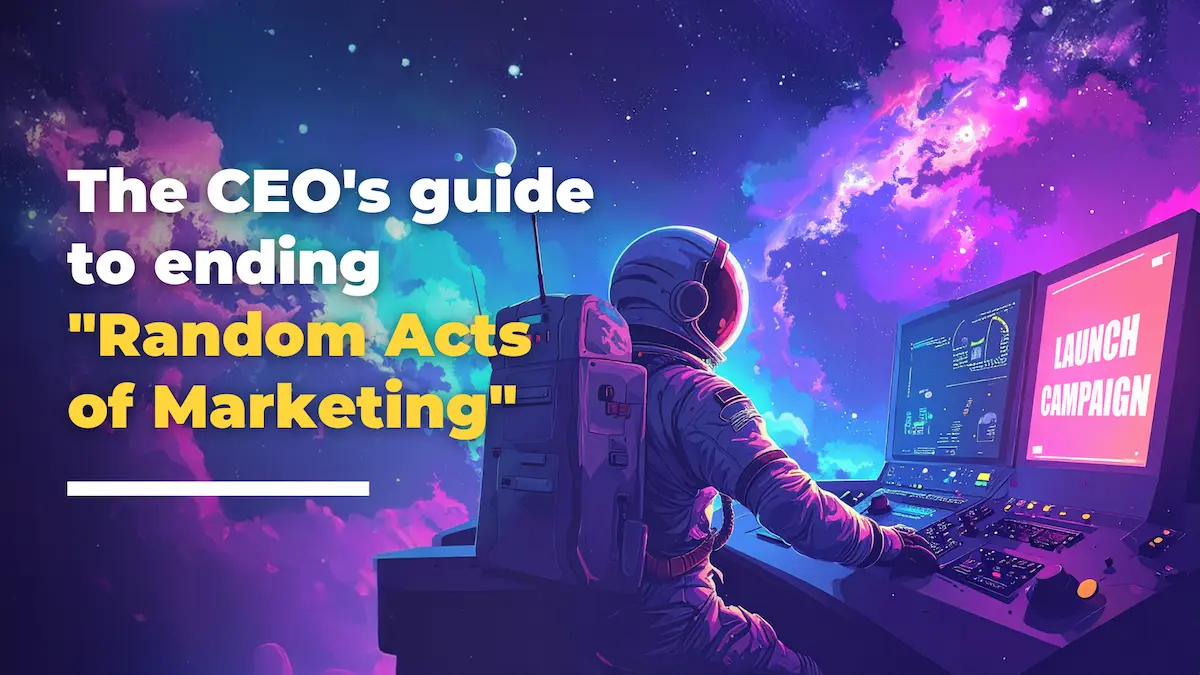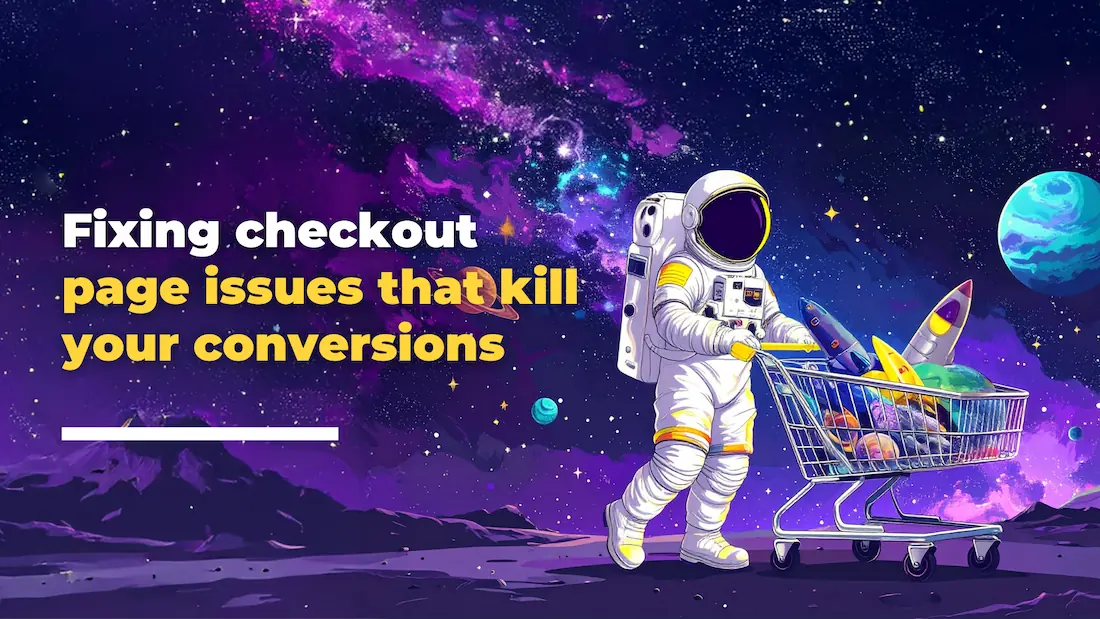It’s a frustratingly common scenario. You’re pouring time, money, and resources into your marketing efforts, yet the returns feel completely unpredictable. One month, you see a promising spike in leads; the next, it’s radio silence. Your team is busy creating content, running ads, and posting on social media, but you can’t draw a straight line from all that activity to the business outcomes that actually matter: revenue, pipeline, and growth.
If you’re tired of marketing that feels chaotic, disconnected, and impossible to measure, you’re not alone. Many ambitious leaders find their company’s momentum stalling, stuck on a frustrating growth plateau because their marketing lacks a coherent strategy. You’re experiencing the painful symptoms of “Random Acts of Marketing,” and it’s the single biggest obstacle standing between you and predictable, scalable growth.
What Exactly Are “Random Acts of Marketing”?
“Random Acts of Marketing” is the term we have coined for a collection of disconnected marketing tactics executed without a unifying strategy. It’s the default mode for many businesses that have outgrown their initial tactics but haven’t yet implemented an engineered system for growth.
It looks like this:
- Boosting a social media post because it got a few likes.
- Writing a blog post about a topic that seems interesting without considering SEO or lead generation.
- Running a discount promotion because a competitor did.
- Jumping on the latest social media trend without knowing how it connects to your business goals.
Each of these actions might feel productive in isolation, but they don’t build on each other. They are islands in an ocean of effort, leading to inconsistent results, a confused brand message, and a constant feeling of guesswork.
Ready for a #truthbomb? We’re just as guilty as anyone else for getting stuck in the “random acts” loop. We’re all susceptible to it because it can be easy to get distracted from the central goals and objectives. More on that later.
“For a startup, random acts of marketing can sometimes work. A bit of hustle and a lucky break can create initial momentum. But for a scale-up—a business that is established and aiming for aggressive growth—this approach is a recipe for failure.”
The 3 Telltale Signs Your Business is Stuck in the Chaos
How can you tell if “Random Acts of Marketing” are holding your business back? It’s not about a single failed campaign; it’s about a pattern of systemic issues.
- Your Budget Drains with No Clear ROI: You consistently approve marketing spend, but when you ask for the return on that investment, you get reports on vanity metrics like clicks, impressions, or follower counts. There’s no clear connection between the money going out and the revenue coming in. This is the most common symptom and the one that keeps data-driven founders up at night.
- Your Sales Team Complains About Lead Quality: Your marketing team insists they are generating leads, but the sales team dismisses them as low-quality or unqualified. This misalignment is a classic sign of a broken system. Without a shared strategy that defines an ideal customer and maps their journey, marketing and sales are working in silos, wasting resources and creating internal friction.
- Your Growth Has Plateaued, Despite Being Busy: Your team is working hard, but the company’s growth has stalled. The tactics that got you your first hundred customers are no longer effective at getting you to a thousand. This happens when the complexity of your business outgrows the simple, tactical approach you started with. You need a more sophisticated, scalable system to reach the next level.
Why This Approach Fails for Scaling Businesses
For a startup, random acts of marketing can sometimes work. A bit of hustle and a lucky break can create initial momentum. But for a scale-up—a business that is established and aiming for aggressive growth—this approach is a recipe for failure.
Scaling requires predictability. You need to know that for every dollar you invest in marketing, you can expect a certain return. You need a system that can be optimized, measured, and expanded. “Random Acts of Marketing” offer none of that. It’s an unscalable model that relies on hope and guesswork, and as a CEO, you know that’s no way to build a category-leading brand.
JEREMY’S SIDE NOTE: One of the biggest contributors to Random Acts Of Marketing?
CEO enthusiasm. More times than I can count, campaigns have been delayed or derailed because of “shiny object syndrome”; which often hit at 2 AM on a Saturday.
The truth is, in my experience, these late night ideas are less about coming up with a new direction and more of a response to not knowing how the marketing is supporting the business. If the CEO can’t align marketing dollars spent to sales coming in, they will undoubtedly be sitting up late at night ideating how to calm their fears; most often with new ideas.
In short, get your numbers aligned with the business and you will have a much more relaxed CEO (or at least less stressed than usual).
The Antidote: A Strategic Marketing Framework
The only way to escape the chaos is to replace it with clarity. The antidote to random tactics is a Marketing Growth Framework – a comprehensive, documented strategy that connects every single marketing action back to a specific business objective.
Like other well-known marketing frameworks, a true growth-focused framework is not just a marketing plan; it’s an engineered system that is built on business objectives. It starts by answering the most critical questions:
- What kind of growth targets are we actually looking to achieve? (Put numbers to it.)
- Who is our ideal customer that is related to our growth targets? What are their problems and deepest pain points?
- What is our unique value proposition and core brand message?
- What does the entire customer journey look like, from awareness to advocacy?
- Which channels are the most effective for reaching our audience at each stage?
- How will we measure success with metrics that actually matter to the bottom line?
Answering these questions creates the strategic foundation upon which all tactics are built. It ensures your website, content, ads, emails or any other marketing tools you might use all work together as a cohesive engine, guiding potential customers seamlessly through their unique buying journey.
Loomo’s Marketing Growth Framework
If you are worried that your marketing systems and tools are not achieving your goals, we can help. We’ve spent the years and millions of dollars testing marketing strategies and systems so you don’t have to. From that work, we’ve built our own Marketing Growth Framework that walks clients through planning and building marketing ecosystems that offer predictable, business-aligned results. Here is a high-level overview:
1. A Clear, Unified Strategy (The Blueprint)
A framework begins with a deep strategic diagnosis. Before any campaigns are launched, you must have absolute clarity on:
- Who: Your Ideal Customer Profile (ICP) (we call it your 20/80 Dream Buyer).
- What: Your Business Goals (what exactly are you trying to achieve?)
- How: Your Funnel Architecture (the specific stages of your customer journey).
This foundation ensures that every marketing action has a purpose and is aligned with your business goals.
2. The “Asset + Activation” Principle
A truly effective marketing system requires both components working in harmony:
- Assets: The foundational pieces that communicate your value and convert traffic (e.g., your website, core messaging, content).
- Activation: The engine that drives traffic and leads using those assets (e.g., SEO, paid advertising, marketing automation).
Many businesses make the mistake of focusing on one without the other. They build a beautiful website (Asset) but have no plan to drive traffic (Activation). Or they jump straight into advertising (Activation) without a clear message, sales process, or a high-converting website (Asset).
Having one without the other is the primary reason most marketing investments fail. A strategic framework ensures your marketing assets are not just built, but are built to work as part of an integrated system.
3. A Commitment to Data-Driven Optimization (The Feedback Loop)
A strategic marketing framework transforms marketing from an expense into an investment by focusing on the metrics that matter to your bottom line. This means tracking KPIs like Customer Acquisition Cost (CAC), Lifetime Value (LTV), funnel-based Conversion Rates, pipeline value generated by marketing, and overall Marketing ROI.
By implementing a clear measurement plan, you can optimize performance by identifying what works, and forecast growth with confidence. As McKinsey notes, the ability to translate functional KPIs into business metrics is critical for marketing teams to effectively demonstrate themselves as credible owners of growth.
The Path to Predictable Growth
Imagine a future where your marketing is a predictable engine for lead generation and sales. You have a clear, documented roadmap that connects every marketing action to a specific business outcome. Your team is energized, focused on high-impact initiatives rather than chaotic execution. And most importantly, you have the confidence to hit your aggressive growth targets and build the category-leading company you envision.
This isn’t a myth; it’s the result of an engineered system.
From Guesswork to a Predictable System for Growth
Ending “Random Acts of Marketing” is the most important step you can take to break through your growth plateau. It requires a shift in mindset: from a vendor completing tasks to a partner building a system. It means moving beyond short-term tactics and committing to a long-term, strategic approach that delivers predictable results and a measurable return on investment.
Stop the cycle of random tactics and start building a marketing engine you can count on.
Ready to finally have a marketing plan you can feel confident in? Schedule a discovery call, and let’s talk about the future of your business.





